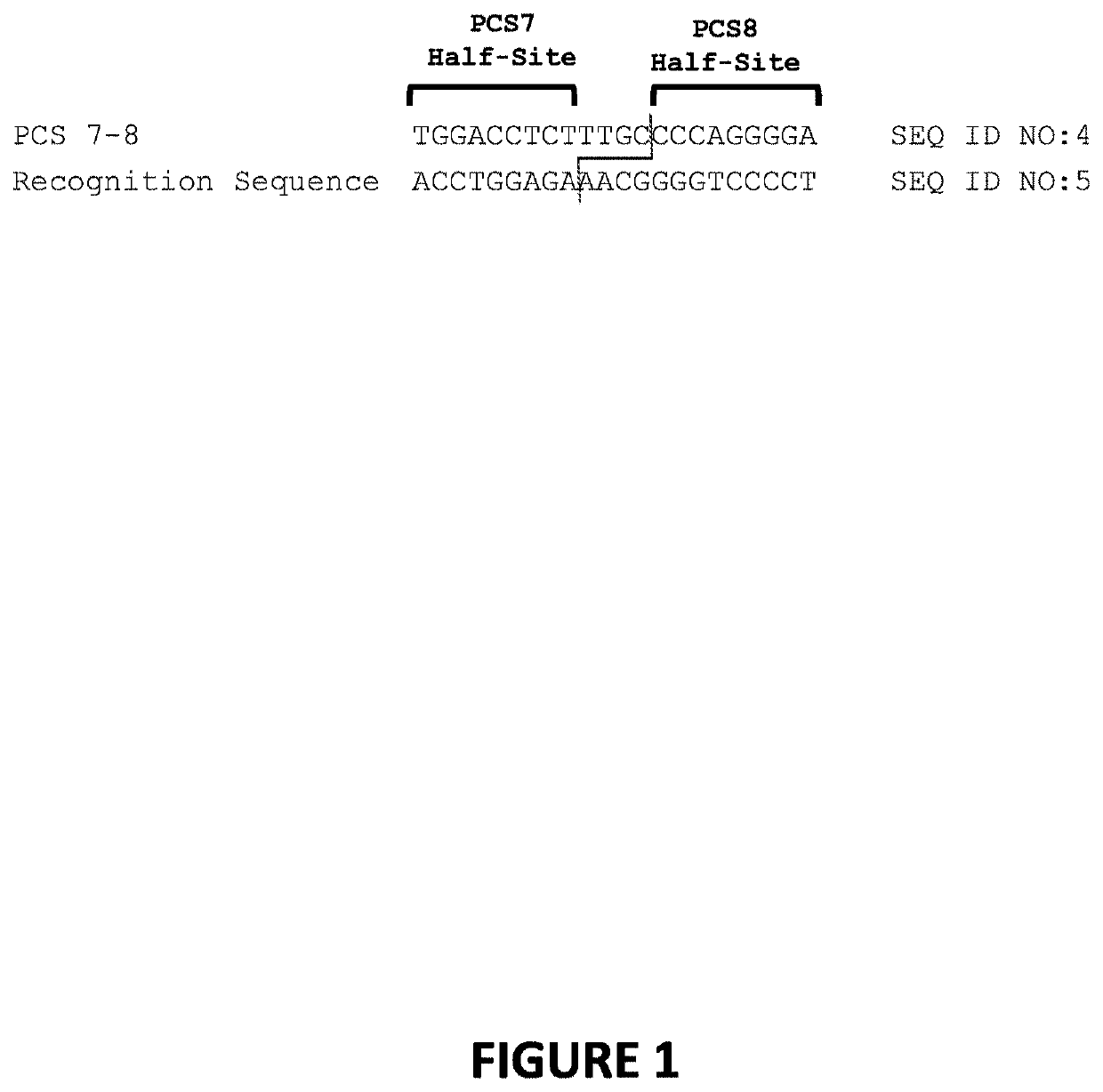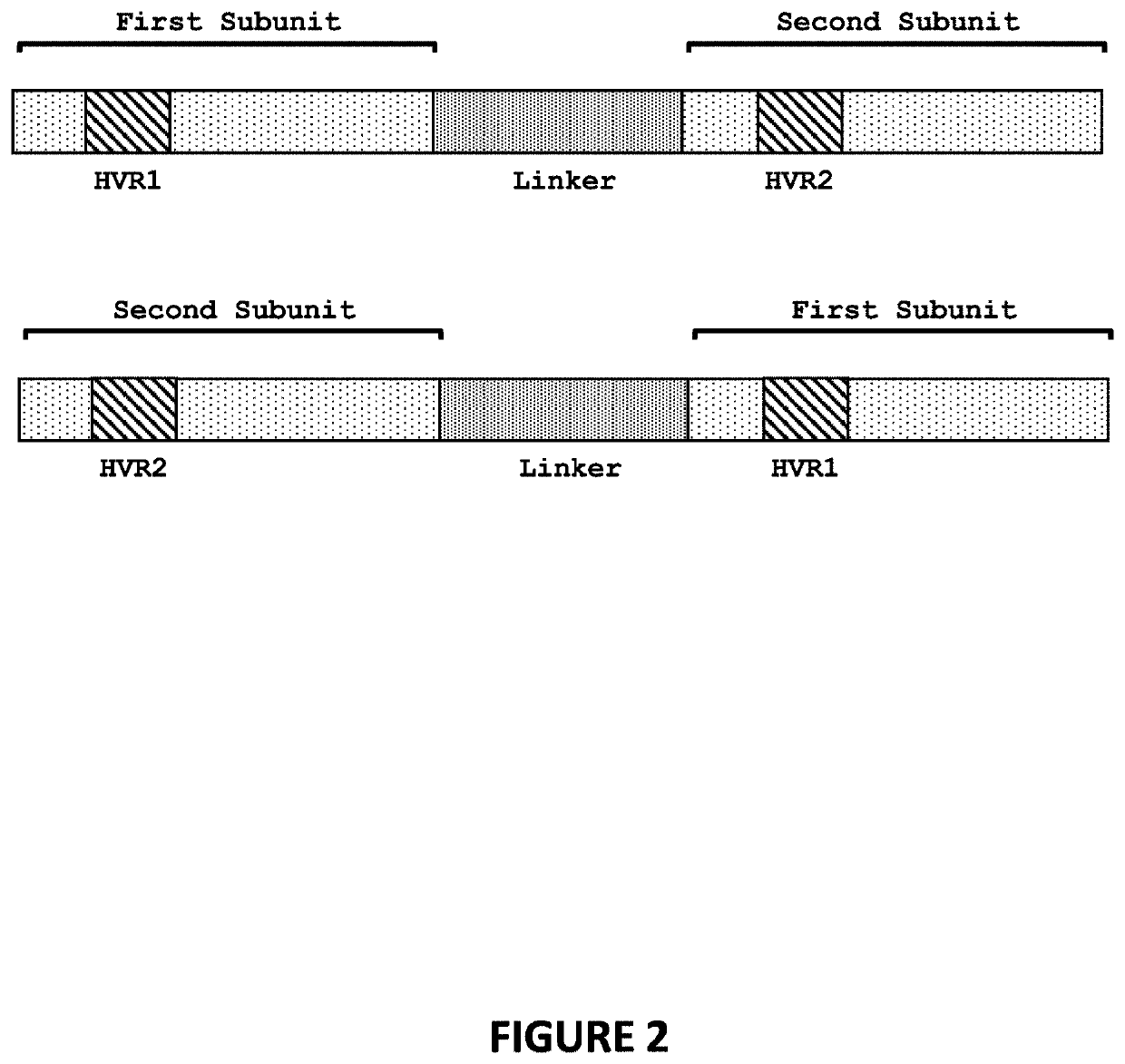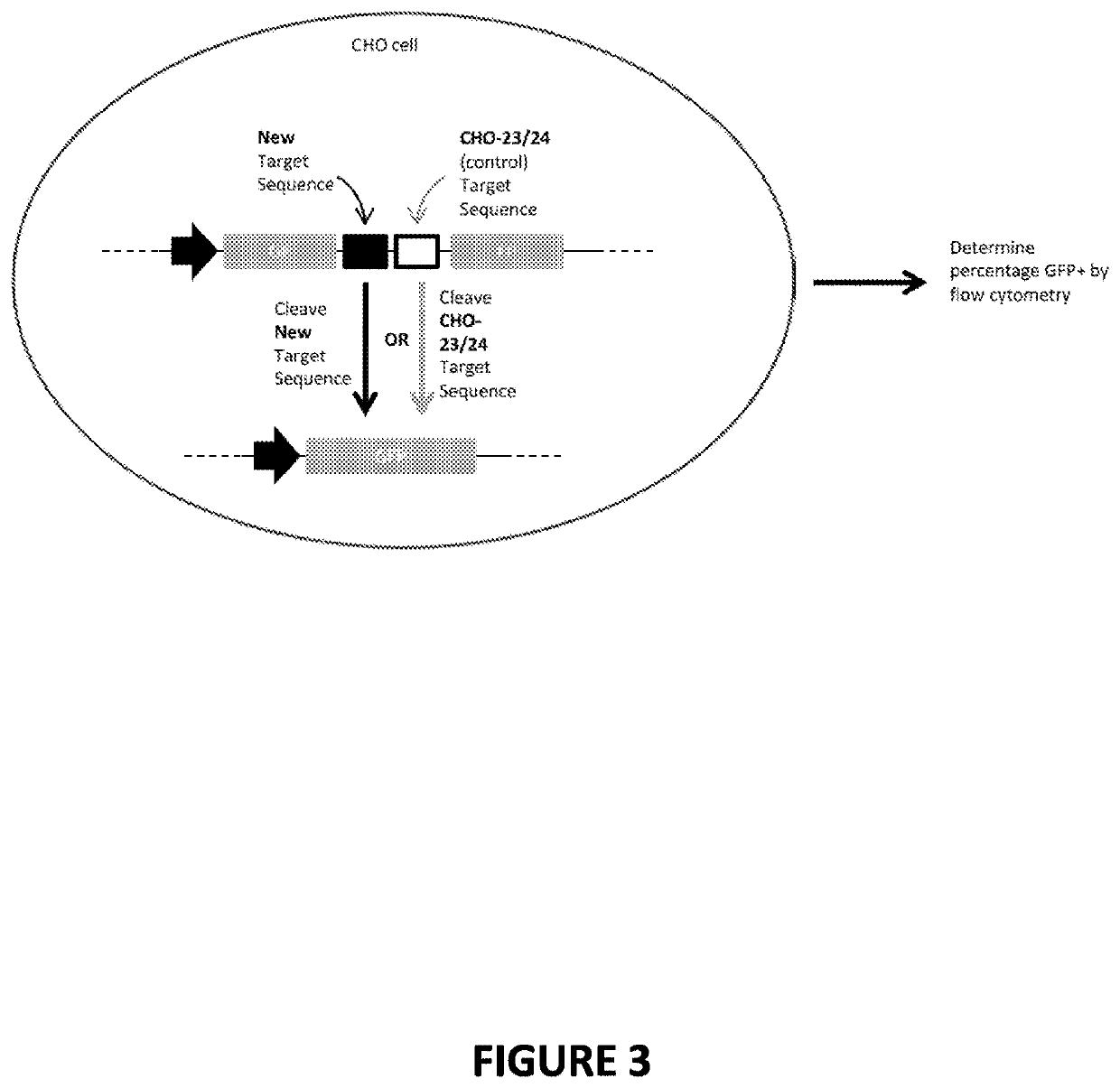Engineered meganucleases specific for recognition sequences in the pcsk9 gene
a meganuclease and recognition sequence technology, applied in the field of molecular biology and recombinant nucleic acid technology, can solve the problems of affecting gene expression, disrupting etc., and achieve the effect of reducing the expression and/or activity of pcsk9 and reducing the total and ldl cholesterol levels
- Summary
- Abstract
- Description
- Claims
- Application Information
AI Technical Summary
Benefits of technology
Problems solved by technology
Method used
Image
Examples
example 1
Characterization of Meganucleases that Recognize and Cleave PCSK9 Recognition Sequences
[0219]1. Meganucleases that Recognize and Cleave the PCS 7-8 Recognition Sequence
[0220]Engineered meganucleases (SEQ ID NOs: 6-14), collectively referred to herein as “PCS 7-8 meganucleases,” were engineered to recognize and cleave the PCS 1-2 recognition sequence (SEQ ID NO: 4), which is positioned within the PCSK9 gene. Each PCS 7-8 engineered meganuclease comprises an N-terminal nuclease-localization signal derived from SV40, a first meganuclease subunit, a linker sequence, and a second meganuclease subunit. A first subunit in each PCS 7-8 meganuclease binds to the PCS7 recognition half-site of SEQ ID NO: 4, while a second subunit binds to the PCS8 recognition half-site (see, FIG. 2).
[0221]The PCS7-binding subunits and PCS8-binding subunits each comprise a 56 base pair hypervariable region, referred to as HVR1 and HVR2, respectively. PCS7-binding subunits are highly conserved outside of the HVR...
example 2
Cleavage of PCS 7-8 Recognition Sequence in HEK293 Cells
1. Experimental Protocol and T7E Assay
[0228]This study demonstrated that PCS 7-8 meganucleases encompassed by the invention could cleave the PCS 7-8 recognition sequence in HEK293 cells.
[0229]2e6 293 cells were electroporated with 2.7ugs of a given PCS meganuclease mRNA using a BioRad Gene Pulser Xcell according to the manufacturer's instructions. At 2 and 5 days post-transfection, genomic DNA (gDNA) was harvested from cells and a T7 endonuclease I (T7E) assay was performed to estimate genetic modification at the endogenous PCS 7-8 recognition sequence (FIG. 6). In the T7E assay, the PCS 7-8 locus was amplified by PCR using primers that flank the PCS 7-8 recognition sequence. If there were indels (random insertions or deletions) within the PCS 7-8 locus, the resulting PCR product would consist of a mix of wild-type alleles and mutant alleles. The PCR product was denatured and allowed to slowly reanneal. Slow reannealing allowed...
example 3
Deep Sequencing to Observe Indels at PCS 7-8 Recognition Sequence
1. Deep Sequencing Protocol
[0232]In order to directly observe insertions or deletions at the intended PCS 7-8 meganuclease target site, a deep sequencing protocol was used. 2e6 HEK 293 cells were electroporated with 5 ug of PCS 7-8 meganuclease mRNA using a BioRad Gene Pulser Xcell according to the manufacturer's instructions. A mock electroporation was also performed with no mRNA. At 48 hours post-transfection, genomic DNA (gDNA) was harvested from cells. The PCS 7-8 locus was amplified by PCR using primers that flank the PCS 7-8 recognition sequence. This amplicon was run on an agarose gel for visual confirmation, extracted using a Macherey-Nagel Nucleospin Gel and PCR Clean-up kit, and sequencing libraries were prepared using the NEBNext Ultra II DNA Library Kit for Illumina from New England Biolabs. The paired-end sequencing libraries were read on an Illumina Miseq DNA sequencer. Sequencing data was analyzed using ...
PUM
| Property | Measurement | Unit |
|---|---|---|
| Fraction | aaaaa | aaaaa |
| Fraction | aaaaa | aaaaa |
| Fraction | aaaaa | aaaaa |
Abstract
Description
Claims
Application Information
 Login to View More
Login to View More - R&D
- Intellectual Property
- Life Sciences
- Materials
- Tech Scout
- Unparalleled Data Quality
- Higher Quality Content
- 60% Fewer Hallucinations
Browse by: Latest US Patents, China's latest patents, Technical Efficacy Thesaurus, Application Domain, Technology Topic, Popular Technical Reports.
© 2025 PatSnap. All rights reserved.Legal|Privacy policy|Modern Slavery Act Transparency Statement|Sitemap|About US| Contact US: help@patsnap.com



